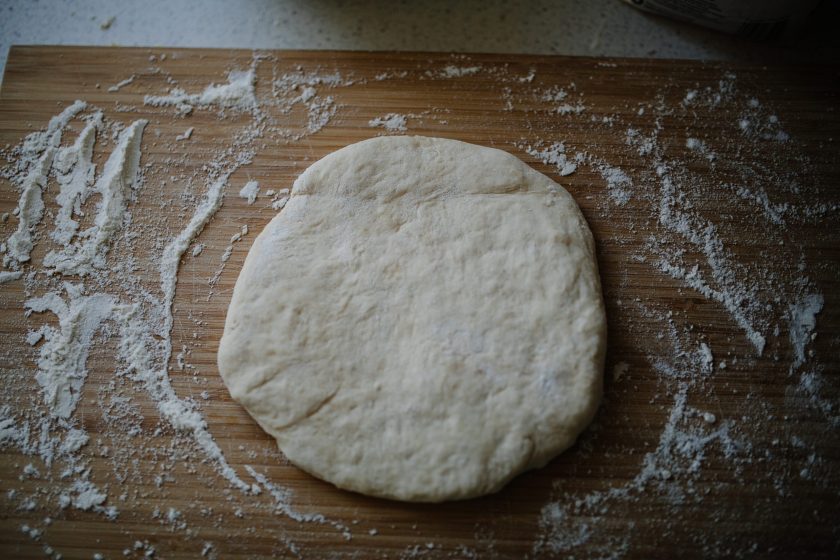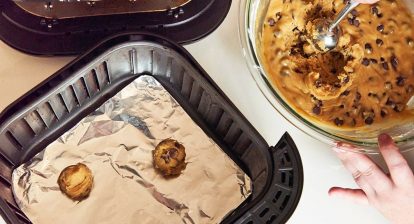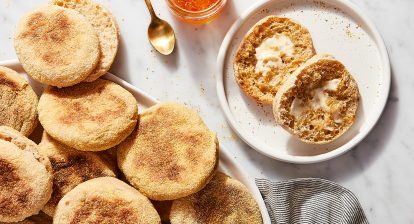Welcome to the world of sourdough. It's one of the oldest bread-making techniques in existence, but that doesn't mean it's outdated. In fact, sourdough is making an incredible comeback! Whether you're looking for healthier bread or just want to experiment with an ancient recipe, understanding moisture levels and how they affect your bread will help you start your journey to baking perfect loaves every time. times. So without further ado, let's dive into the nitty-gritty of the sourdough hydration process, with everything you need to know before you get started.

Table of Contents
What is sourdough hydration?
Basically, when we are discussing the level of hydration in your sourdoughwe're talking about the weight of water in the dough, relative to the weight of flour in the dough.
This can then be expressed as a percentage, i.e. 78% hydration. The higher the hydration level of the dough, the stickier and wetter it becomes.
Therefore, if you have an 80% hydration starter, then your bread will be less sticky than if you use a 50% hydration starter (which translates to more water).
How to calculate hydration?
To calculate hydration, you need to know a few things:
- The weight of your flour and water ( two main ingredients)
- The amount of water you use in your dough recipe
- The number that represents how moist your dough should be (this is called the “hydration” percentage)
For example, if you have 350g of water and 500g of flour, then your hydration level would be 70%, which is quite a high hydration level for your dough. This is because we divide 350g of water by 500g of flour, then multiply by 100 to reach the desired hydration percentage.
How low hydration levels affect sourdough
When you're trying to bake with dough, your hydration level is a key factor in determining how the dough will behave. The higher the hydration level, the more liquid your dough will be; lower levels of water hydration mean stiffer doughs that are easier to handle and work with.
It is important to note that this does not necessarily mean better tasting bread; it just gives different results when comparing a wetter texture versus a drier one.
If your hydration level is too low (ie, you have more flour than water), then here are a few things to expect:
- You'll struggle to incorporate all of your ingredients into a cohesive mass—a problem if you're trying to add grains or seeds such as oats or sunflower seeds to the mix. This means that it will take longer for all of these ingredients to fully combine into what appears to be an even mixture at first glance. And even longer if there are large pieces of grain still visible after the dough is finished
- Your gluten development will also be slower. There is not enough moisture present for proper absorption by the proteins found within the wheat flour itself (allowing them enough time before air bubbles created during raising agents are exposed). This means less rise in your dough and less rise means dense bread. (I wrote a blog post specifically about getting it yeast to grow moreif you want more details)
How higher hydration levels affect sourdough
When working with higher hydration levels, you will notice that the dough is weaker and softer. This means that the ingredients will be incorporated easily as the dough will be wetter. A looser texture also makes it harder to handle as it is very sticky, as you will be working with a wetter dough.
When making sourdough bread with a high level of hydration, there is no need for kneading. The extra hydration allows yeast and bacteria to roam easily making it better for fermentation and gluten development.
other the benefit of having less gluten (as well as less sugar) is that your sourdough bread won't rise as much in your oven due to the lack of gas bubbles that are released by these factors when using lower hydration.

What is the best hydration level for sourdough?
Many questions, what can be the best level of dough hydration in sourdough recipes, and this can be answered in many ways.
For example, if you like dense, chewy bread with a thick crust then you will want to use less water. We know that the higher the hydration level, the more difficult it becomes to handle and shape your dough. However, if you can achieve an open crumb along with a thin crust, then this may be something worth experimenting with.
The level of hydration used in sourdough baking will depend on the type of bread you hope to achieve, as well as the amount of flour you plan to use.
If it's going to be used to make sandwiches, then maybe you should try using less water so your fillings don't run too much. Using sandwich bread as an example, this can be done with lower moisture doughs, making the bread easier to handle for baking and allowing the flavors to stick to the dough during the bread making process, completing your baking. with exceptional flavors that allow to make the perfect level of hydration for sandwiches.
Determining the exact level you're hoping for will depend on the type of sourdough you're making. If you happen to reach a higher level of hydration and struggle with forming a shape, it can result in overworking yourself and the dough as you try to shape the dough so it's ready for your oven. But once you achieve that incredible open crumb, coupled with a thinner crust, then this could be the result of the highly hydrating dough you've been looking for!
Sourdough hydration levels chart
To give you an idea of the type of texture that different hydration levels can provide, here is a range of bread products and what type of hydration levels they typically range between:
| Hydration level | The impact on the dough | They affect the bread | Types of bread in this Hydration |
| 50% – 60% | Firm non-sticky dough | Close crunch, firm texture, high rising bread | Bagels, pretzels |
| 60% – 70% | Slightly sticky dough | Medium crumb, with a soft texture | Sandwich bread, challah, French bread, sourdough |
| 70% or more | Loose and moist dough | Open call | Ciabatta, focaccia, whole grain, sourdough, Artisan |
Hydration levels and types of flour
The type of flour you use during the sourdough process will affect the level of hydration you are hoping to achieve.
For example, Whole wheat flour absorbs more waterso the more you have in your dough, the higher the hydration level.
If you are planning to switch entirely to whole wheat, from your normal white flour, then you should aim to add 10 to 15% higher hydration, providing extra absorption. Additionally, individual flours vary in absorption levels. These variations are visible for the same type of flour, but of different brands, so it is wiser to experiment beforehand.
However, the hydration level you decide to stick with will depend on your preference for a wetter dough and how open a crumb you like. To begin with, you should go for a hydration level that is around 67%. This will produce a good crumb without too much trouble when pre-forming your dough. Therefore, allowing you to adjust the hydration level by 1 or 2% at a time each time you bake.
Starting sourdough hydration levels
Many bakers prefer to keep them the beginning of sourdoughr with 100% hydration. This means they use equal amounts of flour and water to feed their starter.
However, this is not always the case. Some bakers may choose to alternate between lower and higher levels of hydration.
And here's why:
- Low level of hydration of sourdough
- The highest level of sourdough hydration
Low level of hydration of sourdough
Some bakers get a thicker or stiffer starter by achieving a low hydration dough. A stronger starter means your sourdough starter has been fed more flour than water, so it's easier to handle. Most solid engines are maintained at 50% hydration.
Wild yeasts and bacteria feed on sugars and starches at a slower rate, meaning they can go much longer without feeding. This is great if you are not always available to feed the starter often.
On the other hand, there will be more acetic production in a strong starter. Your sourdough bread will turn out abundantly more sour.
The highest level of sourdough hydration
Pushing your starter hydration levels to 100% ensures an easy mix for your dough. Most high hydration beginners aim for 125% hydration..
Since the flour is absorbed so quickly, the sourdough starter is quickly and easily fed. This also means that your starter will need to be fed often. A wetter starter means that live bacteria are working their way through sugars and starches at a higher rate.
Higher hydration starters will produce a softer tasting bread, as they are a product of lactic acid growth.

Sourdough hydration process
In this article, we've covered everything you need to know about hydration levels in sourdough. We discussed how they are calculated and what they mean for your bread. We also provided information on how low hydration levels affect your dough as well as high hydration levels.
Hydration is an important part of sourdough baking. It affects the taste, texture and shelf life of your bread.
We hope this article helps you decide how much water to put in your next batch!







